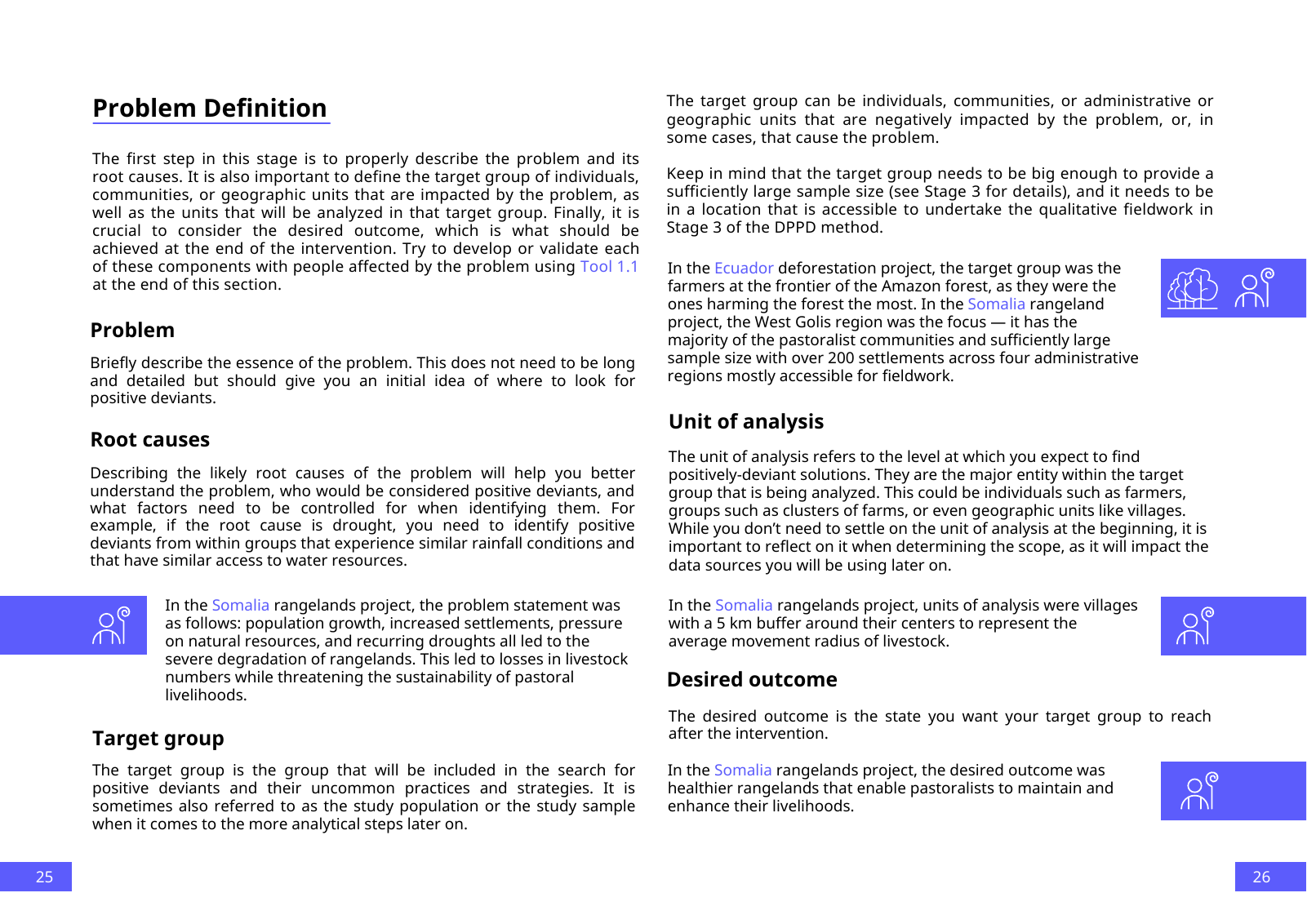Problem Definition The first step in this stage is to properly describe the problem and its root causes It is also important to define the target group of individuals communities or geographic units that are impacted by the problem as well as the units that will be analyzed in that target group Finally it is crucial to consider the desired outcome which is what should be achieved at the end of the intervention Try to develop or validate each of these components with people affected by the problem using Tool 1 1 at the end of this section Problem Briefly describe the essence of the problem This does not need to be long and detailed but should give you an initial idea of where to look for positive deviants In the Somalia rangelands project the problem statement was as follows population growth increased settlements pressure on natural resources and recurring droughts all led to the severe degradation of rangelands This led to losses in livestock numbers while threatening the sustainability of pastoral livelihoods Root causes Describing the likely root causes of the problem will help you better understand the problem who would be considered positive deviants and what factors need to be controlled for when identifying them For example if the root cause is drought you need to identify positive deviants from within groups that experience similar rainfall conditions and that have similar access to water resources Target group The target group is the group that will be included in the search for positive deviants and their uncommon practices and strategies It is sometimes also referred to as the study population or the study sample when it comes to the more analytical steps later on The target group can be individuals communities or administrative or geographic units that are negatively impacted by the problem or in some cases that cause the problem Keep in mind that the target group needs to be big enough to provide a sufficiently large sample size see Stage 3 for details and it needs to be in a location that is accessible to undertake the qualitative fieldwork in Stage 3 of the DPPD method In the Ecuador deforestation project the target group was the farmers at the frontier of the Amazon forest as they were the ones harming the forest the most In the Somalia rangeland project the West Golis region was the focus it has the majority of the pastoralist communities and sufficiently large sample size with over 200 settlements across four administrative regions mostly accessible for fieldwork Unit of analysis The unit of analysis refers to the level at which you expect to find positively deviant solutions They are the major entity within the target group that is being analyzed This could be individuals such as farmers groups such as clusters of farms or even geographic units like villages While you don t need to settle on the unit of analysis at the beginning it is important to reflect on it when determining the scope as it will impact the data sources you will be using later on In the Somalia rangelands project units of analysis were villages with a 5 km buffer around their centers to represent the average movement radius of livestock Desired outcome The desired outcome is the state you want your target group to reach after the intervention In the Somalia rangelands project the desired outcome was healthier rangelands that enable pastoralists to maintain and enhance their livelihoods 25 26

Hinweis: Dies ist eine maschinenlesbare No-Flash Ansicht.
Klicken Sie hier um zur Online-Version zu gelangen.
Klicken Sie hier um zur Online-Version zu gelangen.